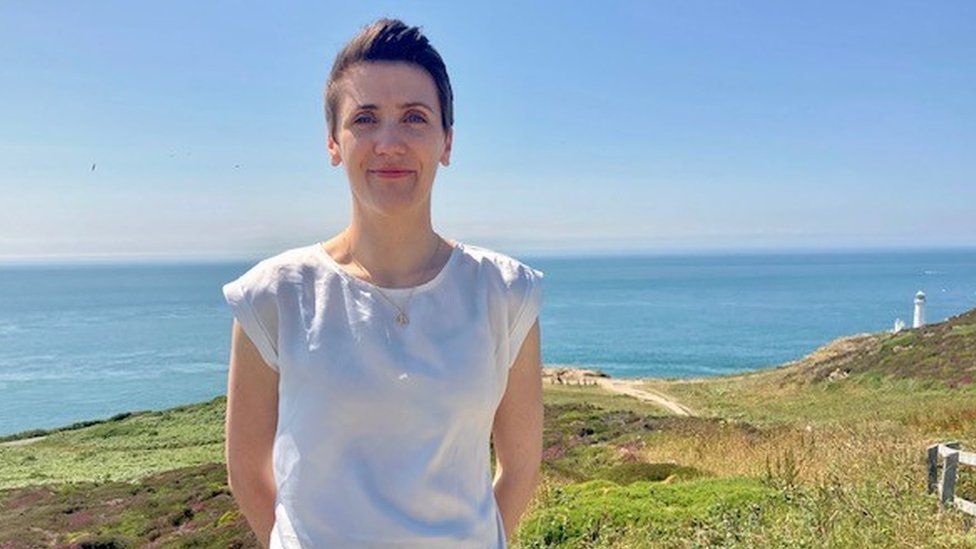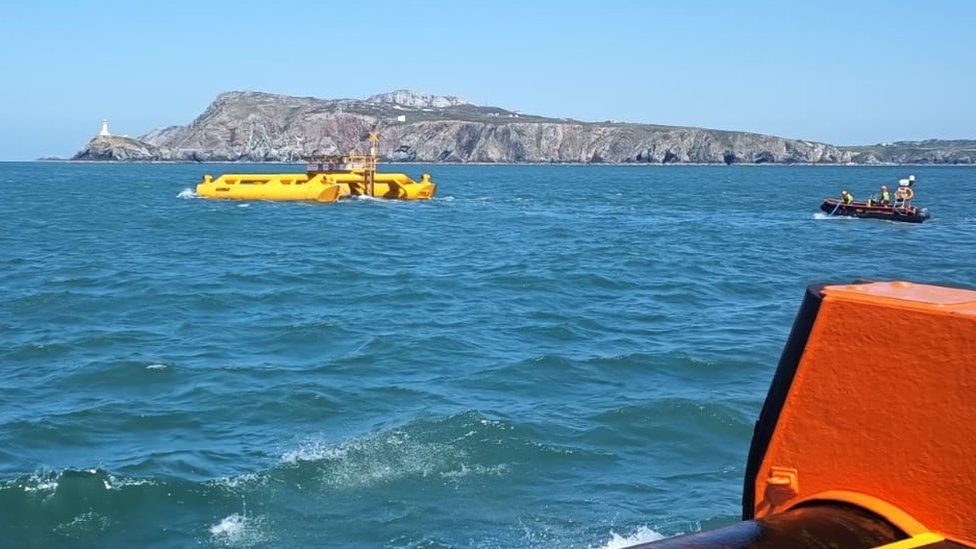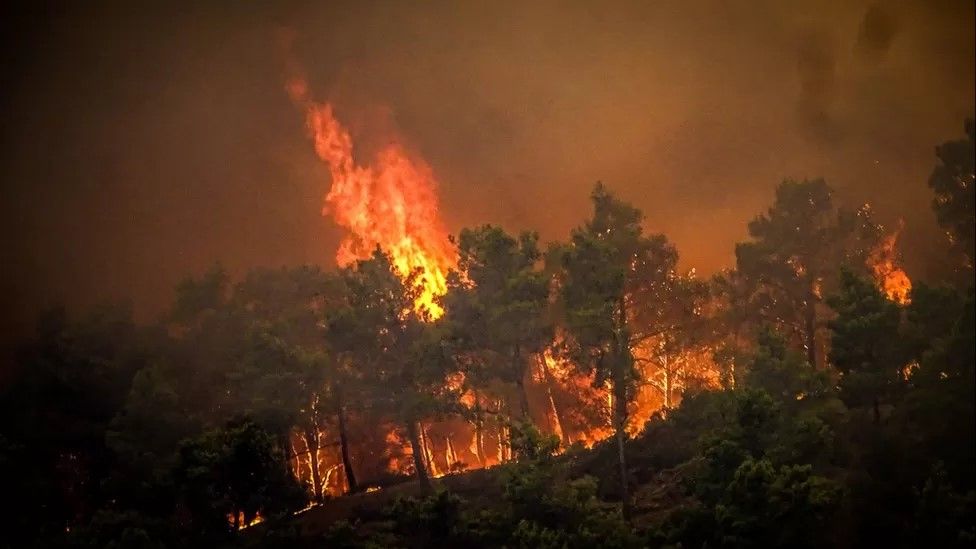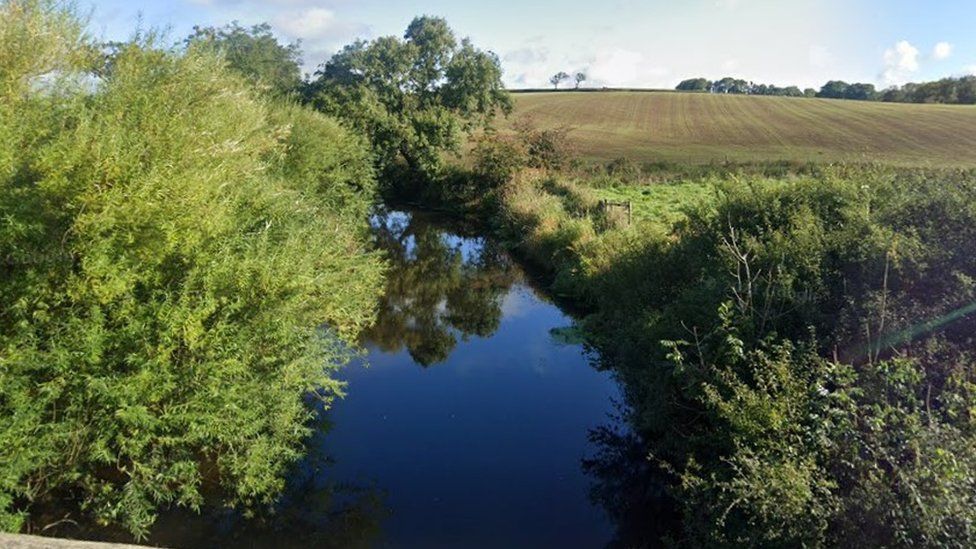A sophisticated buoy used in a large-scale tidal energy project in north Wales that helps protect marine life is "leading the world," according to its creators.
It helps the team learn more about animals like dolphins and porpoises off Anglesey by testing data collection techniques and analysis.
Environmental organizations have previously expressed concern about the Morlais plan's potential impact on wildlife.
Data, according to the organizers, will be used to guide future development in the area.
Additionally, other tidal energy projects from around the world will receive the knowledge.
The environmental monitoring buoy has data collection tools like surface infrared and red-green-blue (RGB) cameras, as well as underwater RGB cameras and wind speed measurements.
According to Dafydd Gruffydd, managing director of Menter Môn, the organization in charge of running Morlais, it will provide researchers with knowledge regarding the feeding habits and movements of fish and other marine animals.

"That will then help us understand what effect, if any, the devices will have on the wildlife off this coast when we actually deploy them.
"The research will be crucial to the expansion of tidal energy globally, and the technology we are using in this project is state-of-the-art. ".
Organizations like Natural Resources Wales and the North Wales Wildlife Trust are advising on marine mammals, birds, and fish as part of the work.
Additionally assisting with shore-based seabird monitoring efforts is RSPB Cymru.
The buoy is a component of the Marine Characterization Research Project (MCRP), whose manager, Clare Llywelyn, called the research "world-leading research" in light of the "lack of evidence within the tidal stream energy industry.".
We're pretty sure there won't be any effects on the local marine wildlife, she said.
"However, we want to keep learning. It simply means that we won't move forward with the next stage of development, the deployment of the turbines, until we are confident there won't be a significant impact.

"As an environmentally sensitive site like Menter Môn, we want to make sure we're doing everything we can to protect the marine wildlife in this area.
"In the past, we conducted in-depth impact analyses to learn more about the wildlife, and monitoring will continue for the duration of the project. .
It's incredibly thrilling. To effectively promote this industry, the MRCP findings will be made available to comparable tidal stream energy projects in Wales and around the world. ".
The Morlais project received a £31 million grant in March 2022, the last significant grant from the EU's regional funding program for the project.
The project will be able to supply clean energy to more than 180,000 homes once it is fully operational.

"The idea is that a developer — you can compare it to a caravan site — that they bring their device, plug it in, and they get connected straight into the grid," said Gareth Roberts, Morlais' operational leader. .
"We've set up all the necessary infrastructure, including the necessary buildings and cables.
"It stretches all the way back to the Parc Cybi grid connection. The developer only needs to bring their equipment, submerge it in water, run cables, and connect to our system. " .
Mr. Roberts asserted that the project would put Anglesey "definitely on the map" in terms of tidal energy as the "biggest site of its kind in the world.".
Living on Anglesey, he continues, "as a local, it's fantastic.". .
Many developers around the world, he claimed, "have a great interest in what we're doing here.".
Work is anticipated to start on the installation of turbines in the sea in the Morlais zone in 2026 after this stage of the MCRP is finished.
For the duration of the project, environmental monitoring will be done to make sure that seabirds and marine mammals are protected.







